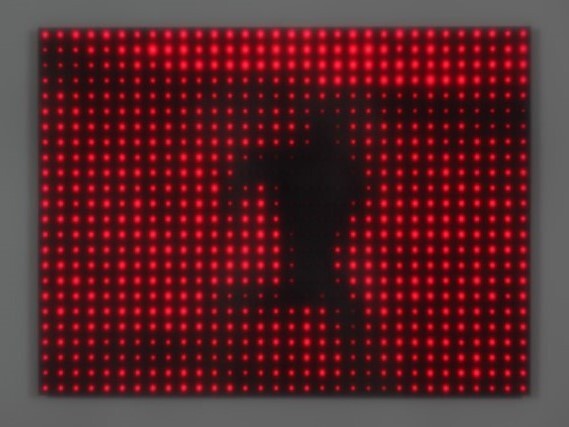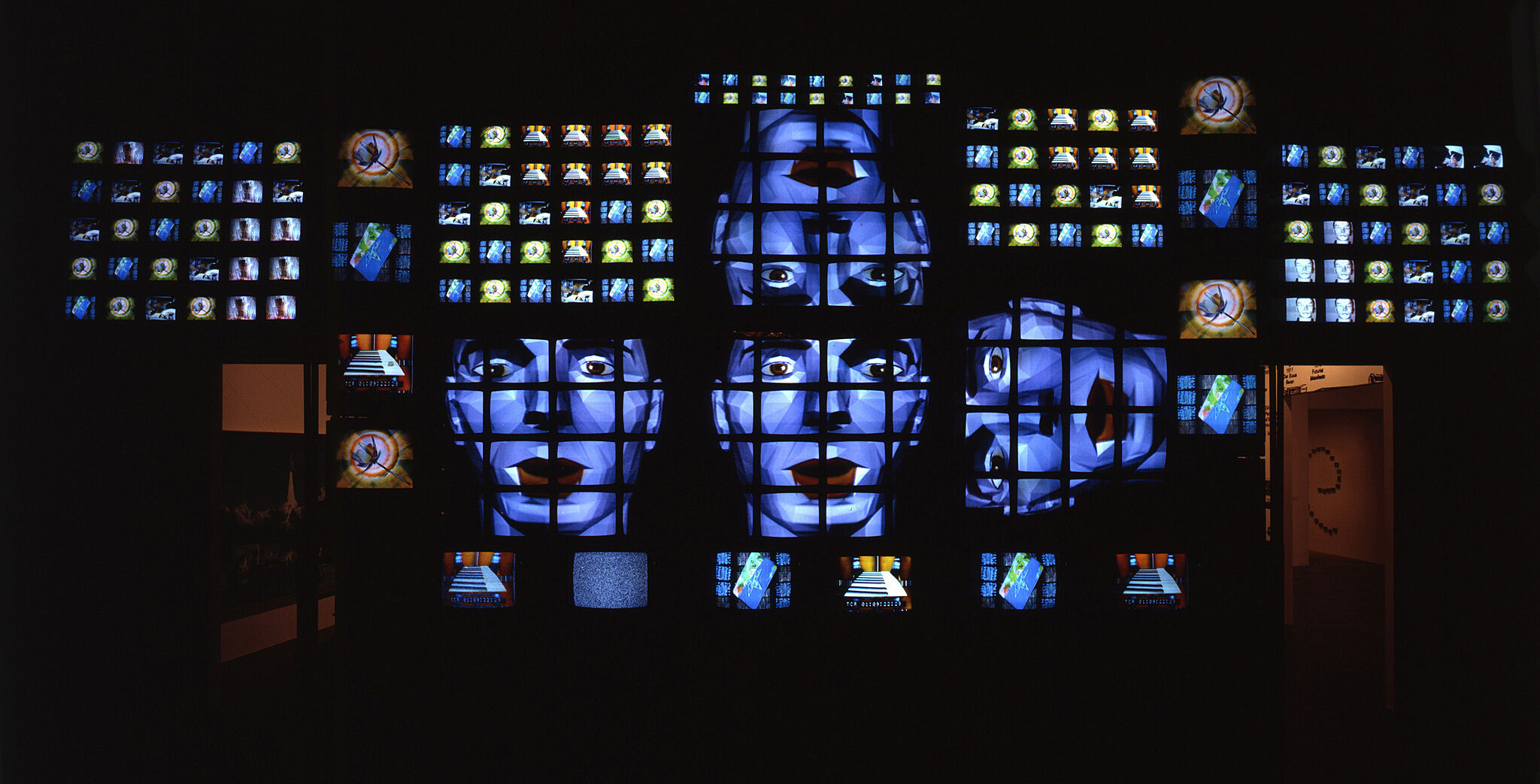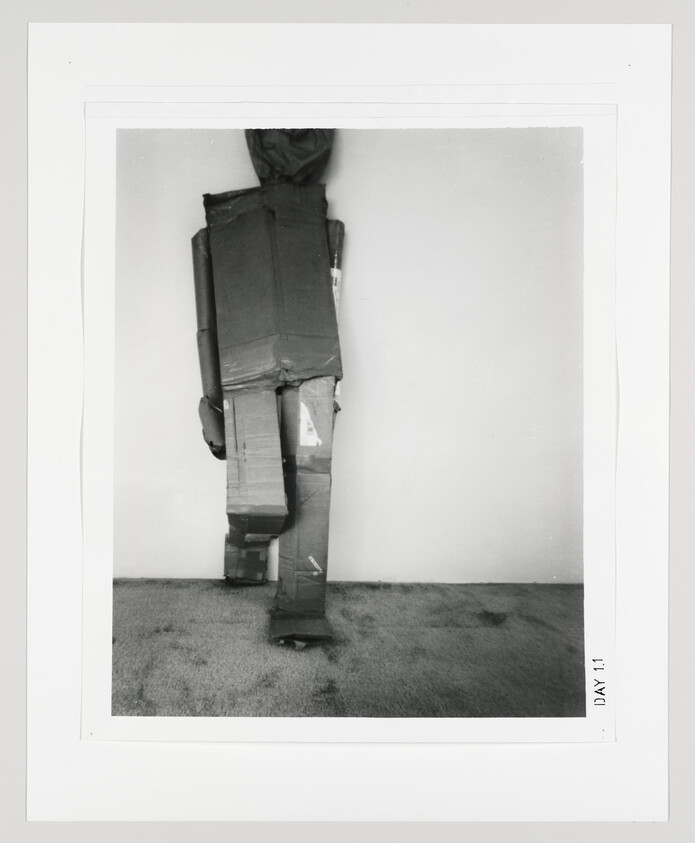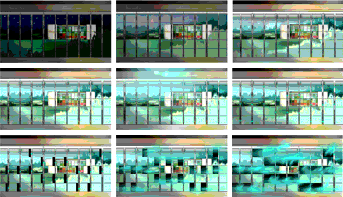Not on view
Date
2000
Classification
Digital Art
Medium
LED and custom electronics
Dimensions
Overall: 21 5/8 × 28 7/8 × 5/8 in. (54.9 × 73.3 × 1.6 cm)
Accession number
2001.128
Credit line
Purchase, with funds from the Contemporary Painting and Sculpture Committee
Rights and reproductions
© artist or artist's estate
Audio
-
Jim Campbell, Ambiguous Icons #5 (Running, Falling), 2000
In Programmed: Rules, Codes, and Choreographies in Art, 1965–2018 (Spanish)
0:00
Jim Campbell, Ambiguous Icons #5 (Running, Falling), 2000
0:00
Narrador: En Iconos Ambiguos # 5 (Correr, Caerse), Jim Campbell utilizó luces de LED—diodo electroluminiscente—como si fueran píxeles para formar una imagen de baja resolución.
Jim Campbell: Ese era el experimento en un principio, ver qué puede representarse en baja resolución sin que pierda sentido.
Narrador: Jim Campbell.
Jim Campbell: El título de esas obras originales, Iconos Ambiguos, es claramente un oxímoron, ya que los iconos de una pantalla de computadora no tienen sentido en sí mismos, sino que solo apuntan a otras cosas que sí tienen sentido. Por eso, elegí utilizar aproximadamente el mismo número de píxeles que se utiliza en los iconos de una pantalla de computadora para comprobar si el contenido emocional, el contenido poético, podría representarse en una resolución tan baja.
Narrador: Campbell llevó la idea aún más allá en Reconstrucción #7, expuesta en las inmediaciones.
Jim Campbell: En Reconstrucción #7 hay un filtro, que es una pieza de resina de dos pulgadas de grosor que contiene pigmentos y tintes puros.
Y lo que hace el filtro es que sea más reconocible. De alguna manera, si se quiere, simula la distancia. Si uno se alejara caminando unos doscientos pies de la obra roja que tienen aquí, la obra (correr, caerse), ya no podría ver la estructura digital. Y los filtros que tienen estas obras hacen eso mismo. O bien eliminan o eliminan parcialmente la estructura digital, haciendo que la imagen sea más reconocible. Una de las cosas que ocurren—y me llevó un tiempo darme cuenta de esto—cuando uno está viendo una estructura digital es que se convierte en ruido para el cerebro, que está intentando ver la imagen, porque el cerebro se está concentrando en realidad en estas luces rojas titilantes.
-
Jim Campbell, Ambiguous Icons #5 (Running, Falling), 2000
In Programmed: Rules, Codes, and Choreographies in Art, 1965–2018
0:00
Jim Campbell, Ambiguous Icons #5 (Running, Falling), 2000
0:00
Narrator: In this work, Jim Campbell used LEDs—light emitting diodes—as though they were pixels, to form a low-resolution image.
Jim Campbell: That was the experiment in the beginning: what can be portrayed in low resolution and still have meaning?
Narrator: Jim Campbell.
Jim Campbell: The title of those original works—Ambiguous Icons—is clearly an oxymoron, as icons on a computer screen have no meaning themselves. They're pointers to other things that have meaning. So I chose to use about the same number of pixels that is on a computer screen icon to see if emotional content, poetic content could be portrayed in such low resolution.
Narrator: Campbell pushed the idea further in Reconstruction #7, which is on view nearby.
Jim Campbell: With Reconstruction #7 there's a filter, which is a 2” thick piece of resin that has raw pigment and dye embedded in the resin.
And what the filtering does is that it makes it more recognizable. It kind of, if you will, simulates distance. If you walked a couple of hundred feet away from the Running/Falling work that you have, you wouldn't be able to see the digital structure anymore. And filters in front of these works do the same thing. They either eliminate or partially eliminate the digital structure, making the image more recognizable. One of the things that happens—it took me a while to figure this out—when you're looking at the digital structure, is that it's noise to your brain when you're trying to see the image, because your brain is actually focusing on these blinking red lights.
Exhibitions
Installation photography
-
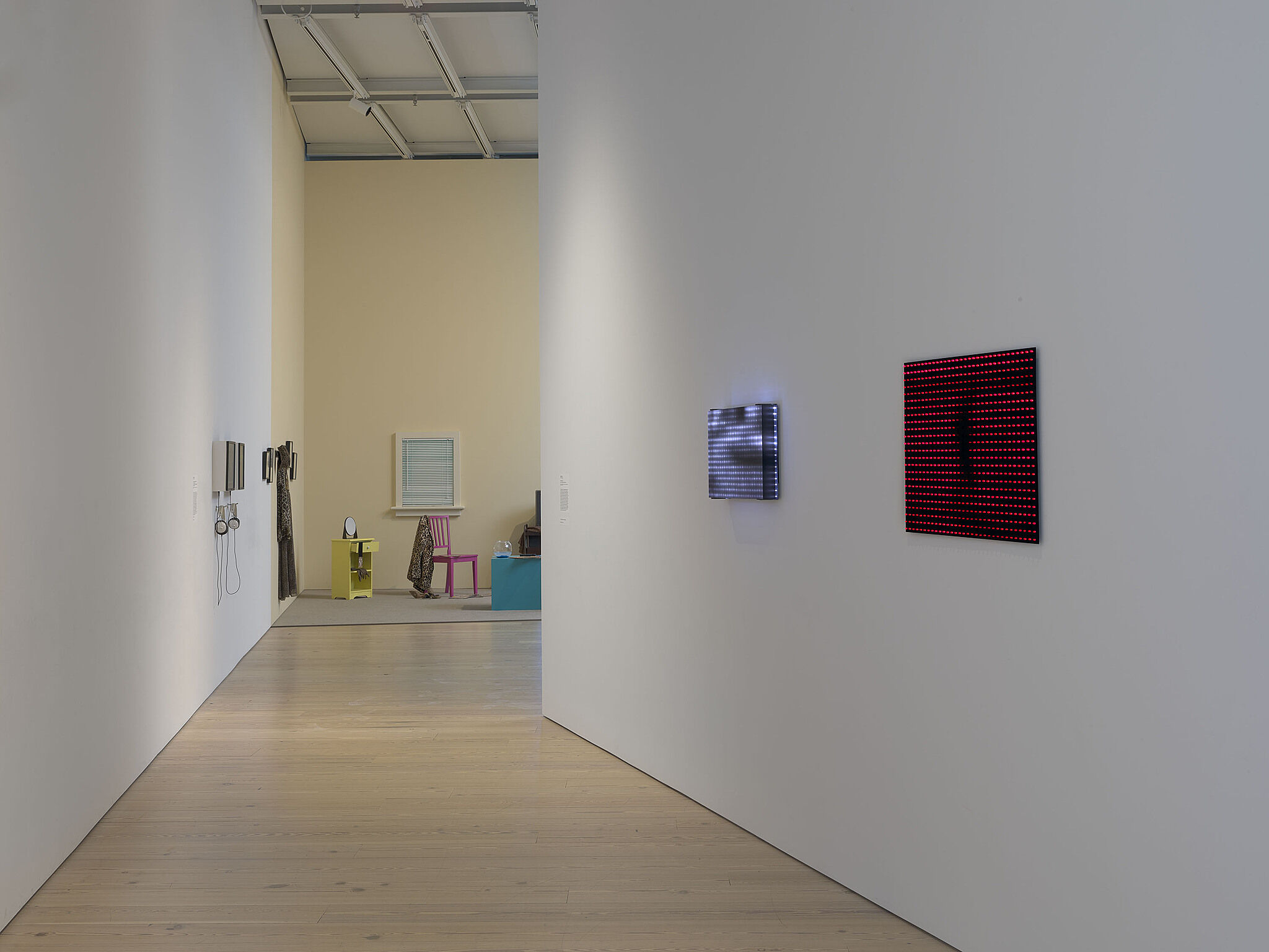

Installation view of Programmed: Rules, Codes, and Choreographies in Art, 1965–2018 (Whitney Museum of American Art, New York, September 28, 2018–April 14, 2019). From left to right: Barbara Lattanzi, C-Span Alphaville and C-SPAN Karaoke, 2005; Lynn Hershman Leeson, Lorna, 1979–84; Jim Campbell, Reconstruction 7, 2006; Jim Campbell, Ambiguous Icon #5 (Running, Falling), 2000. Photograph by Ron Amstutz
From the exhibition Programmed: Rules, Codes, and Choreographies in Art, 1965–2018

